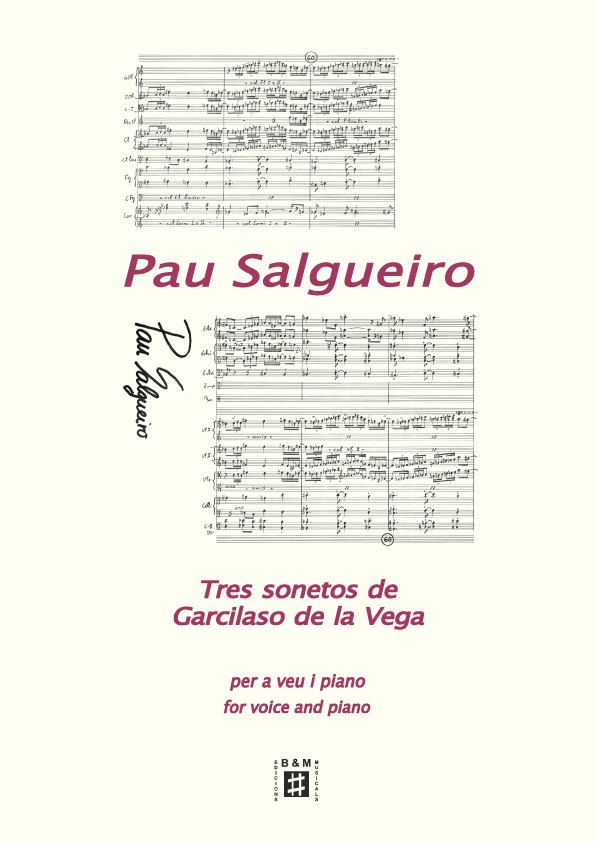Description
Author
Spanish text
Instrumentation
Duration
Pages
Year of composition
ISMN
Ref.
When I was little more than a teenager, I read and reread the poetry of Garcilaso de la Vega, among other Renaissance authors. The poetic topics of that distant time when Europe rediscovered its Greco-Roman past have such a great force and capacity for suggestion that they have reached our time intact and capable of transforming the feelings of each of the generations that rediscover carpe diem, the tempus fugit and other omnipresent themes in Garcilaso and other poets of the time.
Sonnets always consist of fourteen verses, and, in the case of Garcilaso, they usually have eleven syllables, which means that the composition must be relatively long to accommodate the entire text. This fact has caused me a need to try to vary the music in such a way that, without repeating the text so as not to lose the natural rhythm of the small narrative of the sonnet, the ideas and musical phrases could, in turn, imitate this narrative evolution and tell a little story with music too.
The result is three compositions for voice and piano in which I try to dissociate the accompaniment from the melody, but at the same time, surround it and give it a broader meaning. There are fragments of these songs in which the poet despairs, and I, as a composer, can only despair with him and underline it with my musical contribution.
Probably, Garcilaso de la Vega is such a great poet that he does not need anyone to set music to his verses, but I am such a small composer that I need his verses to be able to create music that is worth listening to and playing.




















There are no reviews yet.